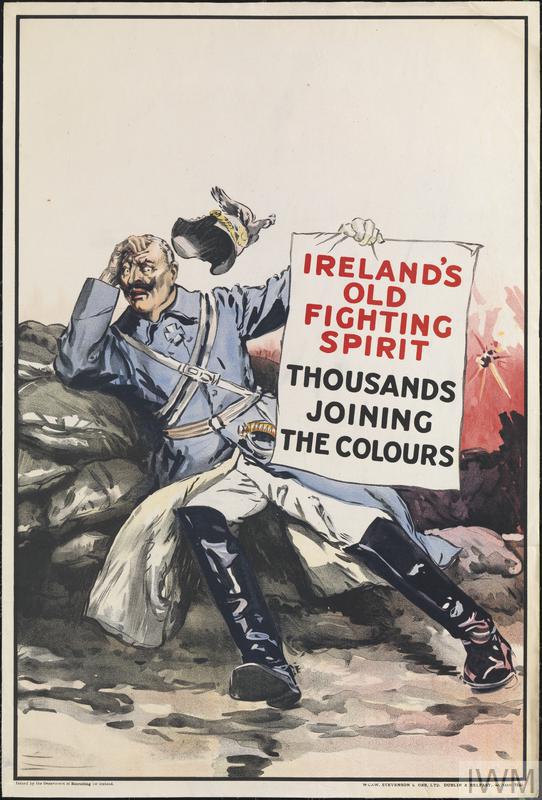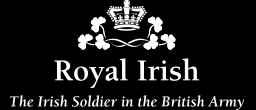Explore Listing
Army Order Number 324, dated 21 August 1914, ordered the formation of six Divisions for Kitchener's New Army that would include the 10th (Irish) Division. It was to be commanded by Lieutenant-General Sir Bryan Mahon until November 1915 and its infantry brigades' battalions were drawn from Ireland's four provinces.
29 Brigade with regiments from Ulster, Munster, Leinster and Connaught included:
5th (Service) Battalion The Royal Irish Regiment
(later became the Divisional Pioneer Battalion)
6th (Service) Battalion The Royal Irish Rifles
5th (Service) Battalion The Connaught Rangers
On 8 December 1915, there was once again thick fog blanketing the slopes below the 10th (Irish) Division's new defensive positions. The Bulgarians had driven the defenders off Rocky Peak and its flanking positions the day before.
In April 1915, the Allies had tried to force the Dardanelles by attempting to capture the Gallipoli Peninsula of Turkey. However, as the situation had stalled with the Allies hemmed in at Anzac Cove and Cape Helles, the 10th (Irish) and the 11th Division were sent to land at Suvla Bay and break the stalemate. The plan was that a diversionary attack would be launched from Cape Helles followed by an offensive from Anzac Cove while the two reinforcement divisions would land later that night at Suvla Bay.
The Ulster Defence Regiment formed a new battalion on 1 July 1972 titled the 11th (Craigavon) Battalion The Ulster Defence Regiment with its Battalion Headquarters located in Portadown.
In May 1975 one hundred and eighty-seven officers and enlisted men of C Company Combat Team 12th US Infantry Regiment were hosted for an exchange visit by the School of Infantry. However, they were looked after by 1 R IRISH (the Demonstration Battalion) for most of their visit. The visitors were afforded traditional Irish hospitality by all and various competitions were organized as the Americans grew more expert in handling their hosts' weapons, vehicles and equipment.
The Germans launched chemical (gas) attacks before dawn on 27 April against elements of I (British) Corps including 16th (Irish) Division. The attack was near Hulluch, about 1 mile to the north of Loos in the north of France. The gas and artillery attacks were followed by raids into the British lines. A change in wind direction thwarted a second attack on 29 April when the gas blew back over the German attackers and their front line, inflicting many casualties.
 Army Order No. 382, dated 11 September 1914, authorised six divisions numbered from 15 to 20 for the Second New Army. The 16th (Irish) Division, at Mallow in County Cork, consisted of 47, 48 and 49 Brigade located respectively in Fermoy, Buttevant and Tipperary.
Army Order No. 382, dated 11 September 1914, authorised six divisions numbered from 15 to 20 for the Second New Army. The 16th (Irish) Division, at Mallow in County Cork, consisted of 47, 48 and 49 Brigade located respectively in Fermoy, Buttevant and Tipperary.
The 16th (Irish) Division returned to England from the continent on 14 June 1918 for reconstitution.
 Badly mauled around Ronssoy during the German Spring Offensive, the 16th (Irish) Division was much reduced by its cumulative losses during the retreat and was transferred from VII Corps to XIX Corps on 25 March 1918. It would remain with this formation and fight at the Battle of Rosières (26/27 March 1918).
Badly mauled around Ronssoy during the German Spring Offensive, the 16th (Irish) Division was much reduced by its cumulative losses during the retreat and was transferred from VII Corps to XIX Corps on 25 March 1918. It would remain with this formation and fight at the Battle of Rosières (26/27 March 1918).
The Battle for Ginchy was fought on 9 September 1916, during the second of the three operational phases of the Battle of the Somme, and resulted in the capture of the German-held village by the 16th (Irish) Division.
Following the Battle of Guillemont from 3-6 September, the British were to advance to ground that over-watched the German's third line positions in preparation for an attack planned for mid-September. The advance had begun on 3 September, when the 7th Division had captured Ginchy and then lost it following a German counter-attack. Now it was the 16th (Irish) Division's turn.





